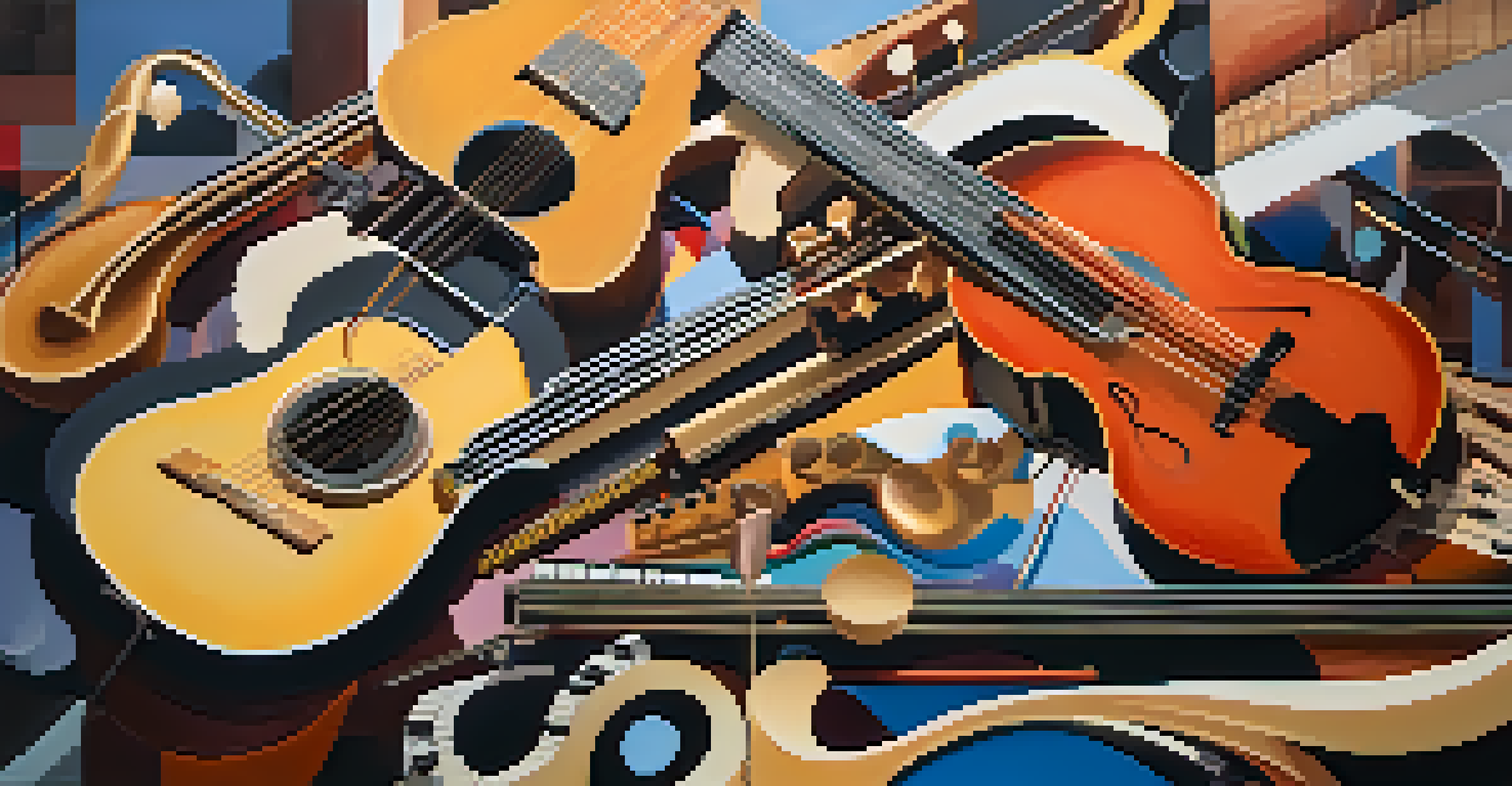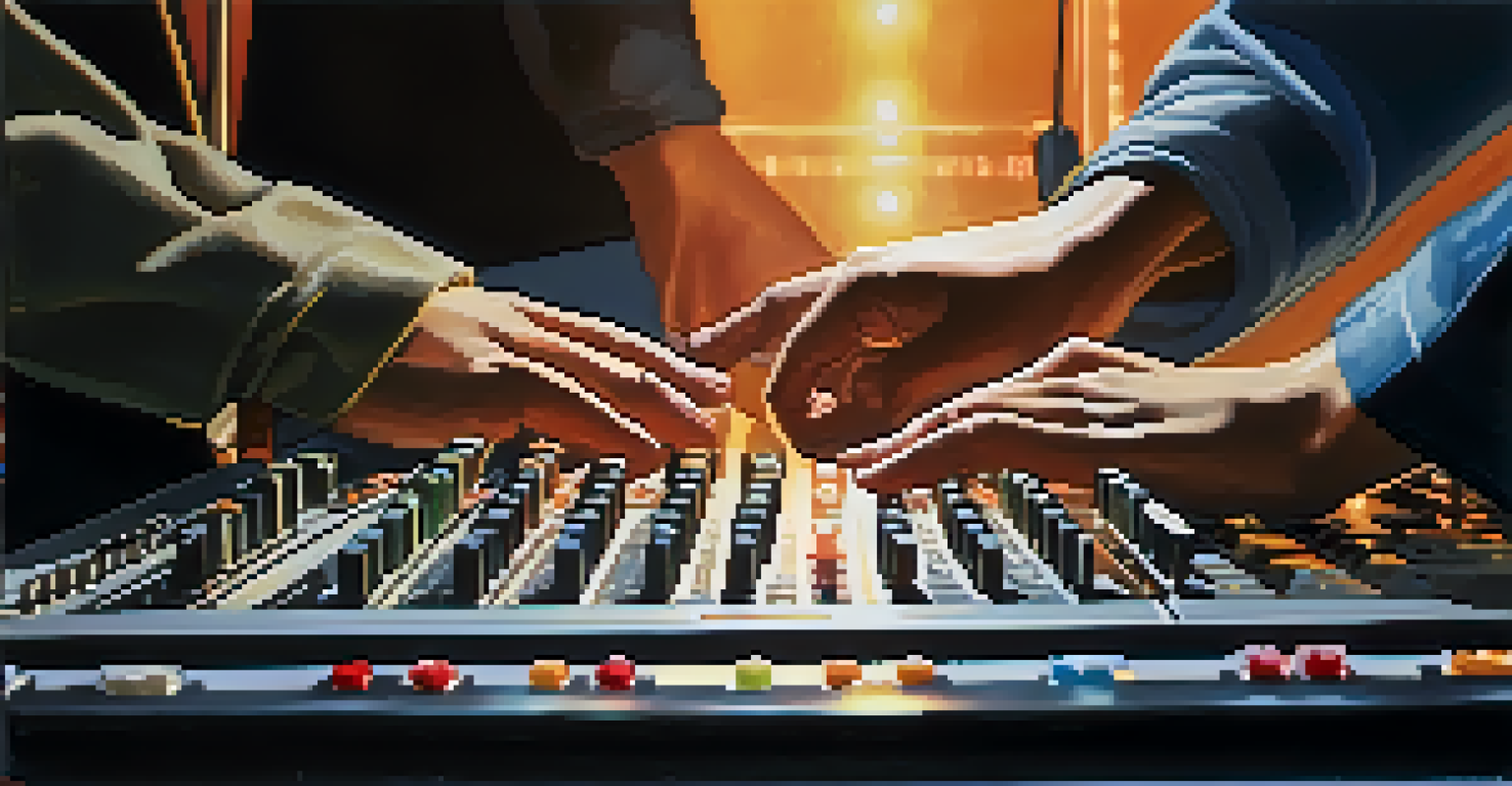The Art of Compromise: Balancing Ideas in Music Collaborations

Understanding the Essence of Collaboration in Music
Collaboration in music is like a beautiful dance between artists, where each partner brings their unique style and flair. It’s not just about merging different sounds; it’s about creating something that resonates with both the artists and the audience. When musicians come together, they often start with diverse ideas, which can lead to incredible innovation or, sometimes, conflict.
The beauty of collaboration lies in this balance, where individual creativity meets collective harmony.
This is where the art of compromise becomes essential. Each collaborator must be willing to listen, adapt, and sometimes let go of their initial vision for the greater good of the project. The beauty of collaboration lies in this balance, where individual creativity meets collective harmony.
Ultimately, successful collaborations can produce music that is richer and more dynamic than what any single artist could create alone. By valuing each other's contributions, musicians can craft a sound that feels both fresh and authentic.
The Importance of Communication in Musical Partnerships
Effective communication is the lifeblood of any successful collaboration. When artists share their thoughts and feelings openly, it lays the groundwork for understanding and trust. This kind of dialogue can help clarify visions and expectations, making it easier to navigate potential conflicts.

Imagine two songwriters working together; one might prefer a catchy pop chorus, while the other leans towards a more soulful ballad. By discussing their ideas and finding common ground, they can create a song that incorporates both elements, resulting in a track that surprises and delights listeners.
Collaboration Enhances Creativity
When musicians unite their diverse ideas, they create richer and more dynamic music than any one artist could achieve alone.
When musicians prioritize communication, they not only enhance the creative process but also build lasting relationships. These connections can lead to future collaborations and a supportive network that fosters growth and innovation.
Finding Common Ground: The Key to Compromise
Compromise doesn’t mean sacrificing your artistic integrity; it's about finding common ground that honors everyone's vision. Musicians can achieve this by identifying the core elements of their ideas and determining which aspects are non-negotiable. This requires a willingness to be flexible while still maintaining the essence of what makes each artist unique.
Alone we can do so little; together we can do so much.
For example, if one musician is passionate about a particular melody while another insists on a specific rhythm, they can explore ways to blend these elements together. This creative negotiation often leads to unexpected and exciting results, enhancing the overall piece.
Ultimately, the goal is to unite ideas in a way that feels authentic to everyone involved. By focusing on collaboration rather than competition, artists can create a powerful synergy that elevates their work beyond individual contributions.
The Role of Trust in Collaborative Music Creation
Trust is a cornerstone of any successful collaboration. When musicians trust each other's abilities, they feel more comfortable expressing their ideas and experimenting with new sounds. This mutual respect fosters a safe space for creativity to flourish, allowing artists to take risks that they might shy away from in a solo project.
Building trust takes time, and it often comes from shared experiences and successes. When artists work together on multiple projects, they learn each other's strengths and weaknesses, which can lead to a deeper understanding and appreciation of one another’s artistry.
Communication Builds Trust
Open dialogue between artists fosters understanding and trust, which are essential for successful musical partnerships.
In essence, trust allows musicians to let their guard down and fully invest in the collaborative process. This openness can lead to richer, more innovative music as artists combine their strengths and explore uncharted territories.
Navigating Creative Differences: A Case Study
Consider the collaboration between two iconic bands: The Beatles and their diverse influences. John Lennon and Paul McCartney often had differing visions for their songs, but they managed to navigate these creative differences through open dialogue and compromise. This dynamic tension ultimately resulted in some of the most memorable music in history.
For instance, while Lennon favored more avant-garde styles, McCartney brought a pop sensibility that balanced their work. Their ability to see the value in each other’s perspectives allowed them to craft songs that resonated with a wide audience, showcasing the power of compromise in music.
This case study serves as a reminder that differences can be a source of strength rather than division. By embracing contrasting ideas, musicians can create a sound that is both innovative and timeless.
Embracing Flexibility: Adapting to Change in Collaboration
Flexibility is key in collaborative music projects, as artists often need to adapt their ideas to fit the evolving direction of a song. This adaptability can lead to unexpected breakthroughs and creative decisions that enhance the final product. When musicians remain open to change, they allow the music to develop organically rather than forcing it into a predetermined mold.
For example, a band may enter the studio with a specific vision for a song but discover that a spontaneous jam session leads to a completely new arrangement. This kind of flexibility can breathe new life into a project and result in a more authentic sound.
Flexibility Leads to Innovation
Being adaptable during the creative process allows musicians to discover unexpected breakthroughs, enhancing the final product.
By embracing change, musicians can cultivate an environment where creativity thrives. This willingness to pivot not only enriches the collaborative process but also keeps the music fresh and engaging.
Celebrating the Final Product: The Joy of Collaborative Success
After navigating the complexities of compromise and collaboration, there's nothing quite like celebrating the final product. When artists come together to create something beautiful, the joy of seeing their collective vision come to life can be immensely rewarding. This shared success often strengthens the bonds between collaborators, encouraging future partnerships.
Listening to the finished track or performing it live becomes a moment of pride, showcasing the hard work and creativity that went into the project. It serves as a testament to the power of teamwork and the magic that happens when artists unite their talents.

Ultimately, celebrating collaborative achievements not only honors the individual contributions of each artist but also highlights the beauty of compromise. It reinforces the idea that when diverse ideas are blended, the results can be truly extraordinary.